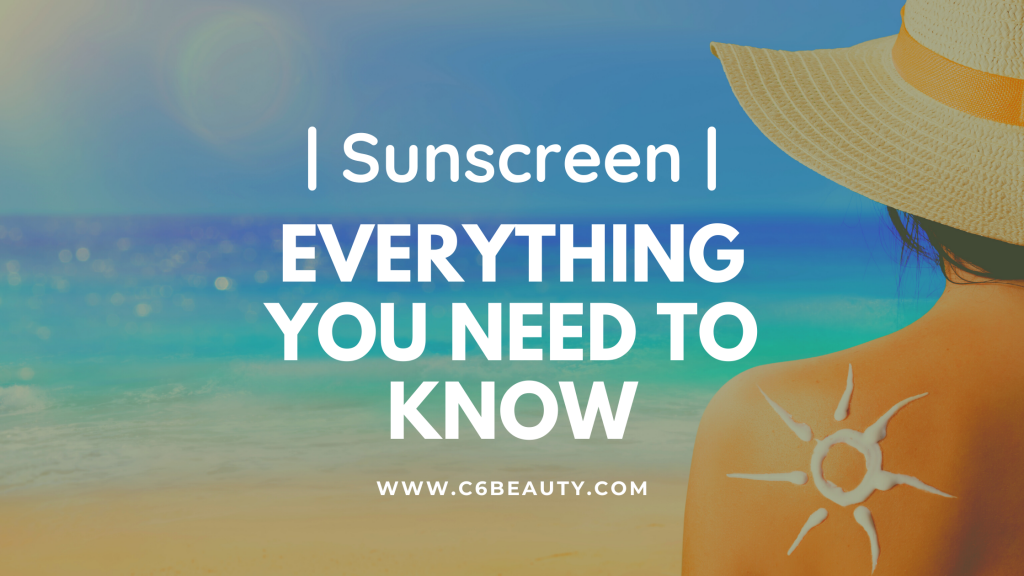Summer has officially arrived and with it also the desire to wear something lighter and finally enjoy the adored warmth and the hot sun. But how to get a faster tan without risking terrible redness and erythema? In this post, we will talk about some sunscreen facts and why it is important to apply a proper protection factor.

Sunscreen facts | what you should NOT do to get a tan faster
I’m sorry to disappoint those who love to cover themselves with oil but this is NOT, in my opinion, a correct method. Growing up in a small village in southern Italy near the sea, I happened to see a lot of people applying oil (even cooking oil…terrible idea!) and lying in the sun for hours to get an enviable tan in a short time. To pursue this common goal, when I was 15 years old my technique was to avoid sunscreen and expose my skin with a very pale phototype to the aggressiveness of the sun’s rays. Result? Terrible sunburn, blisters, and spots on my skin that I still have today. One of the worst decisions ever made.
Sunscreen facts | Why is it important to apply sunscreen to get a tan faster?
By informing myself, I realized how important it is to protect yourself from the sun’s rays. Now, I prefer to enjoy the warmth of the sun in a healthy way and get a gradual tan thanks to the application of adequate sun filters. But let’s see how sun filters work starting from the difference between UVA and UVB.
UVA and UVB the difference
The sun’s rays are a mix of radiation that is partially blocked by the atmosphere, like UVC rays, and partly pass unharmed. Among the latter, UVA and UVB rays are those from which we must protect ourselves not only in summer but throughout the year. Their different energy means that while UVB rays can only penetrate the first superficial layers of the skin, UVA rays, on the other hand, reach the deepest layers.
Which is harmful UVA or UVB?
The answer is both. UVB rays penetrate through the surface layers of the skin and are responsible for the appearance of erythema and sunburn if the skin is exposed unprotected and for long periods in the sun. With a good sun cream, you can reduce the UVB rays by achieving a uniform and more controlled tan.

UVA rays are the most abundant (about 90%), the most energetic, and the most dangerous. Penetrating deeply, they can trigger the skin’s aging process, putting subjects at a higher risk of cancer, (more info here).
What’s SPF in creams?
To protect us from the sun’s rays and their dangerousness, the application of good sun cream is necessary. But how to choose it and what does “SPF” mean?
SPF means sun protection factor and represents the portion of UVB rays that the sunscreen blocks. Let’s take a closer look at how it works with a simple mathematical formula:
- SPF15 means that the sunscreen will let 1/15 of the UVB radiation that is hitting us through and protect us for 94%.
- SPF30 lets 1/30 pass, protecting us for 97%.
- SPF50 will only let 1/50 pass, protecting us for 99%

Depending on the protection provided by SPF factors, the creams are classified into four groups:
- low protection: Spf 6 – Spf10
- medium protection: Spf 15 – Spf25
- high protection: Spf 30 – Spf50
- very high: Spf 50+
There is therefore no sense to buy sunscreens with SPF values above 50+ because the protection will always be around 99.99…%. The European Union has drafted a law specifying this point:
No claim should be made that implies the following characteristics:
(a) 100 % protection from UV radiation (such as ‘sunblock’, ‘sunblocker’ or ‘total protection’);
(b) no need to re-apply the product under any circumstances (such as ‘all day prevention’).
COMMISSION RECOMMENDATION of 22 September 2006
Outside Europe, each country applies its own regulation according to its own criteria. For example, in the US, sun creams are considered to be drugs and not cosmetics as they are in Europe. I leave you here a link for further information.
Since SPF is a sun protection factor that refers only to UVB rays, we should also look for the UVA symbol on the packaging of our cream to indicate the presence of a specific filter for these rays.
Sunscreen facts | further info
If you have other questions about this, please leave me a comment below. I will be happy to answer and give you more info.
Want to know what are the best sunscreens for summer? Check out my article where I list the best environmentally friendly sunscreens.
If you like my content, help me with a small donation. With your support, I would like to buy new ingredients and create original healthy beauty products! Thank you 🙂
Gabi



Love the content!!
– The Blogging ‘Zoomer’
bmoblogs.com
Thanks!